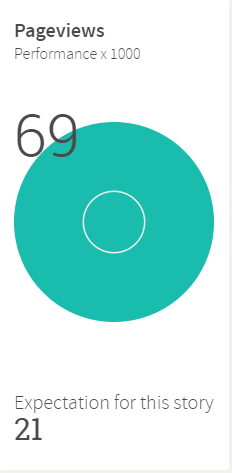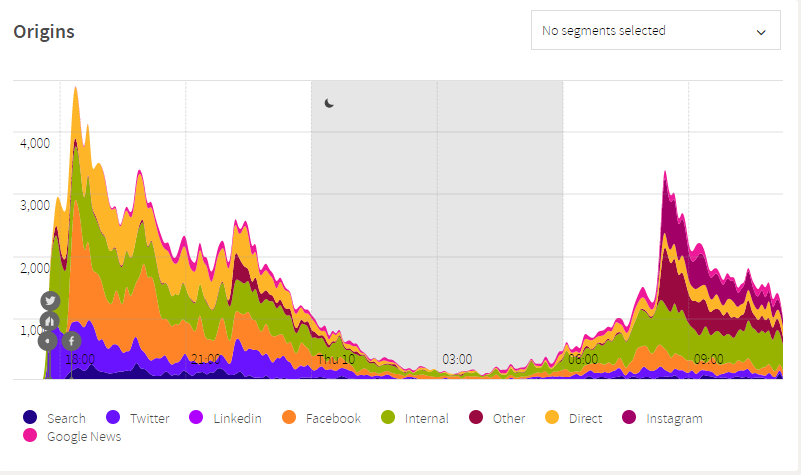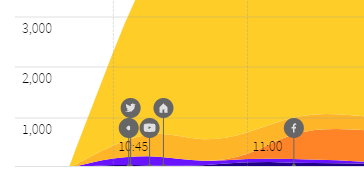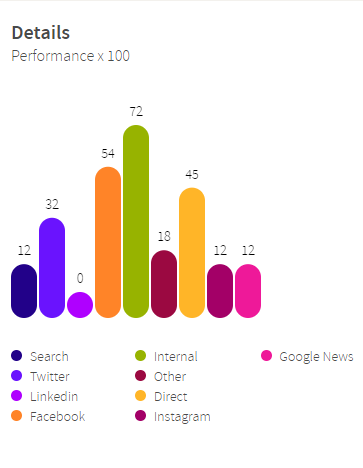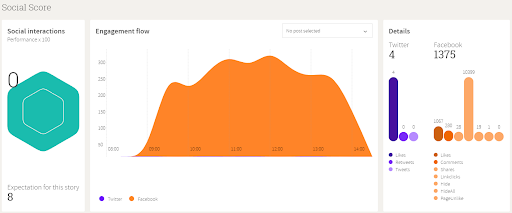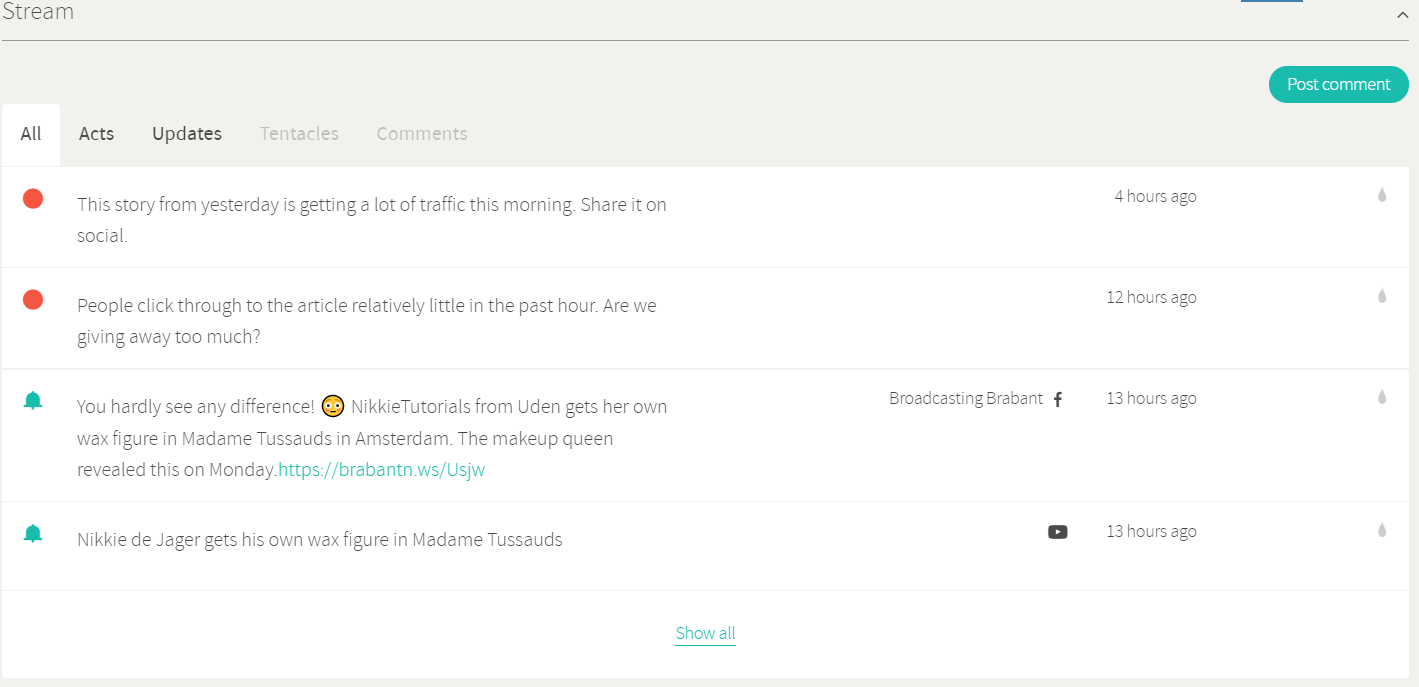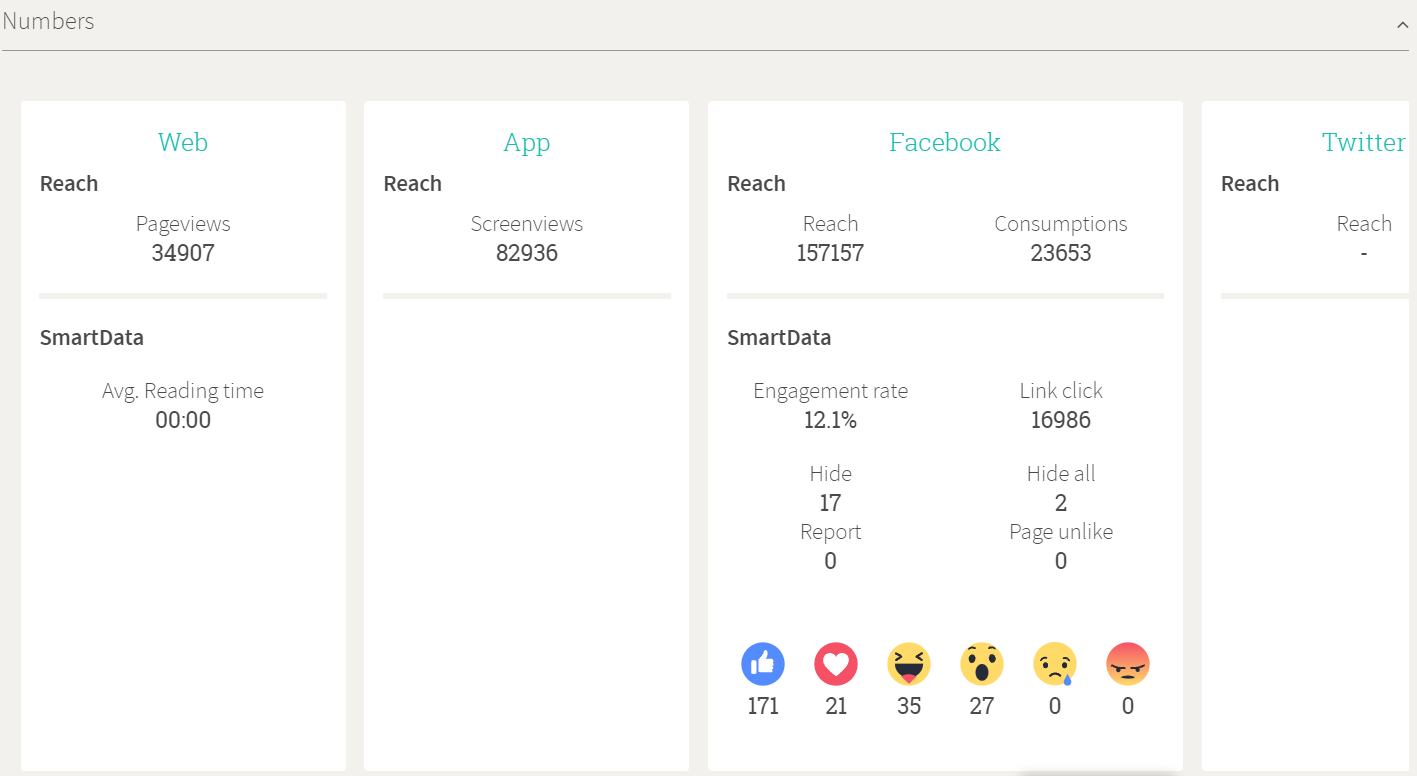What are Stories in smartocto Real-Time?
Stories is one of the main sections of Real time which hold all of the articles. The column Stories shows the 80 most recent stories, based on the publish timestamp and sorted in descending order to have the newest story is always on top.
Each story has icons that indicate that story was posted on some social network or other channel as the homepage or newsletter. Stories also have graphs that you can use to see quickly how the story is behaving in terms or reach without clicking on them.
If your website has paid content, the 'P' icon will indicate that a particular story is a paid article.

Click on the story to visit the Story Details Page.
The Story Details page is divided into 5 sections: Reach, Social Actions, Stream, Story Value Engine, and Numbers.
The Reach section shows how well your article is getting to your readers. It is further divided into Pageviews, Origins, and Details.
Pageviews show how many times your article has been read. Performance is multiplied, which means in the example below that there are 69,000 pageviews. Notice that there are two circles in pageviews. The green circle represents the number of page views and the white circles represent expectations for this article, in this case, 21,000.
Origins and Details show where your page views are coming from and at which period. In the Details, section performance is multiplied by 100.
Small grey icons on the bottom represent where the article is published. Point icon shows publication time, the Twitter icon for Twitter, Home icon for Home page, Play button for a video on the article, and F icon for Facebook. You will receive some notifications base on this, in this example, you will receive notifications article is getting a lot of Facebook traffic but it isn’t posted on it, and later in the period when the article is added on Facebook, you will see an F icon appearing on the section.
Details section is showing traffic numbers. There are a couple of categories:
Internal - Represents the readers moving from one article to another inside your website
Direct - Represents everything that is not known or doesn't have a referrer connected to the views. Most of the traffic is clicks on links that people send to each other via communication apps or groups. The majority of that traffic is something we call Dark Social (What's App, Facebook Messenger, Viber, etc.). Direct Web means that traffic is coming from the website and Direct App is coming from the application. We encourage you to turn unknown traffic into known traffic by using UTM-tags, when possible
Search - Represents the readers coming from browser search for that particular story: Google (Except Google News, that is a separate category), Bing, Yahoo, etc.
Other - Represents the readers coming from other sites that post your articles
The Social score section works in a similar way as the Reach section.
The Stream section shows a list of all notifications and acts regarding that article. On the right side, you can see where it is posted, and if you click on for example Facebook icon, it will lead you to the Facebook post of that article.
The Story Value Engine section is showing Predictions and Conversions. Predictions show how big the reach will be based on the author and the section. Conversions work on the same principle if you have a subscription system.
The Numbers section show more detailed information for example average reading time or likes on Facebook, etc.
Explanation of the Facebook values:
Reach is the amount of timelines the post appeared in. This is an actual Facebook metric.
Consumptions contain any click on a Facebook-post. A click on the picture of the post, a click on the comments-link of the post, a click on the link to the story, up to 'load more comments'. This is a Facebook metric
Engagement rate is the amount of engaged users (Facebook metric) / unique impressions (Facebook metric)
Link click stands for clicks on the shared link on the post.
The parts Hide, Hide all, Report and Page unlike are negative actions Facebook-users can take

